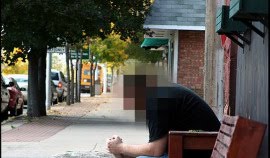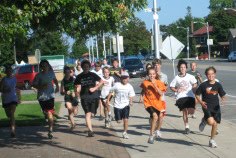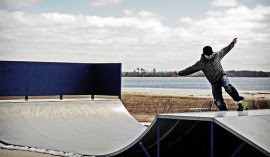Three Components for Home Run Events
Tuesday, October 28, 2008
Three Phase Approach to Small Town Economic Revival Beginning with the Homeless
By Bobbie Stacey - Founder of Home Run Innovations Inc.
The three main components (Collaborative Community Fundraising, Joint Endowment, and Financially Self-Supporting Dispersed Housing) proposed for the structure of Home Run Events Inc. may seem too ambitious to lump into one package under a new non-profit. But I argue that unless an organization embraces and positions itself to fit dynamically into the "big" picture from the outset, all of its efforts will ultimately wither and die.
I'm a fan of systems thinking, one of the disciplines mastered by successful learning organizations who have given up the "illusion that the world is created of separate, unrelated forces."* In his book The Fifth Discipline: The Art & Practice of the Learning Organization, author Peter M. Senge describes what an individual experiences as part of a learning organization.
"Most of us at one time or another have been part of a great team, a group of people who functioned together in an extraordinary way - who trusted one another, who complemented one another's strengths and compensated for one another's limitations, who had common goals that were larger than individual goals, and who produced extraordinary results. I have met many people who have experienced this sort of profound teamwork - in sports, or in the performing arts, or in business. Many say that they have spent much of their lives looking for that experience again. What they experienced was a learning organization. The team that became great didn't start off great - it learned how to produce extraordinary results."**
How I have approached the groundwork for Home Run Events has been greatly influenced by at least one of Senge's partners - a man named Robert Fritz. In my opinion, and in that of many others, Fritz is perhaps one of the most original thinkers of our lifetimes. I used to work for Fritz. I also used to teach courses designed by Fritz from a series called "Technologies for Creating" for which I was certified and licensed. Robert Fritz is the author of several books, the most popular of which is his bestseller The Path of Least Resistance: Learning to Become the Creative Force in Your Own Life.
The tenacity with which I have continued to develop The Salvation Army Home Run over the past two years does not come from foolish stubbornness. It comes from an unusually high ability to maintain "structural tension" that I owe to the lessons of Robert Fritz and his wife Rosalind. Read the Amazon customer reviews of The Path of Least Resistance to see what others have to say. It will impress you. I promise.
My vision for Home Run Events is one where we create a housing solution for our community that no one has ever accomplished before, one that becomes a model for rural America and an innovation to the field of social services. Bringing something into being that has never been there before -that is the essence of the creative process. Can that be accomplished with only one of the components in isolation from the others? Not in my opinion.
Do you agree?
Will you join me?
* The Fifth Discipline: The Art & Practice of the Learning Organization, by Peter M. Senge, p. 4
** Ibid., p. 3

Home Run Events: Innovative Ideas for Community Revitalization by Roberta (Bobbie) Stacey is licensed under a Creative Commons Attribution-Noncommercial-No Derivative Works 3.0 United States License

Home Run Events: Innovative Ideas for Community Revitalization by Roberta (Bobbie) Stacey is licensed under a Creative Commons Attribution-Noncommercial-No Derivative Works 3.0 United States License








0 comments:
Post a Comment